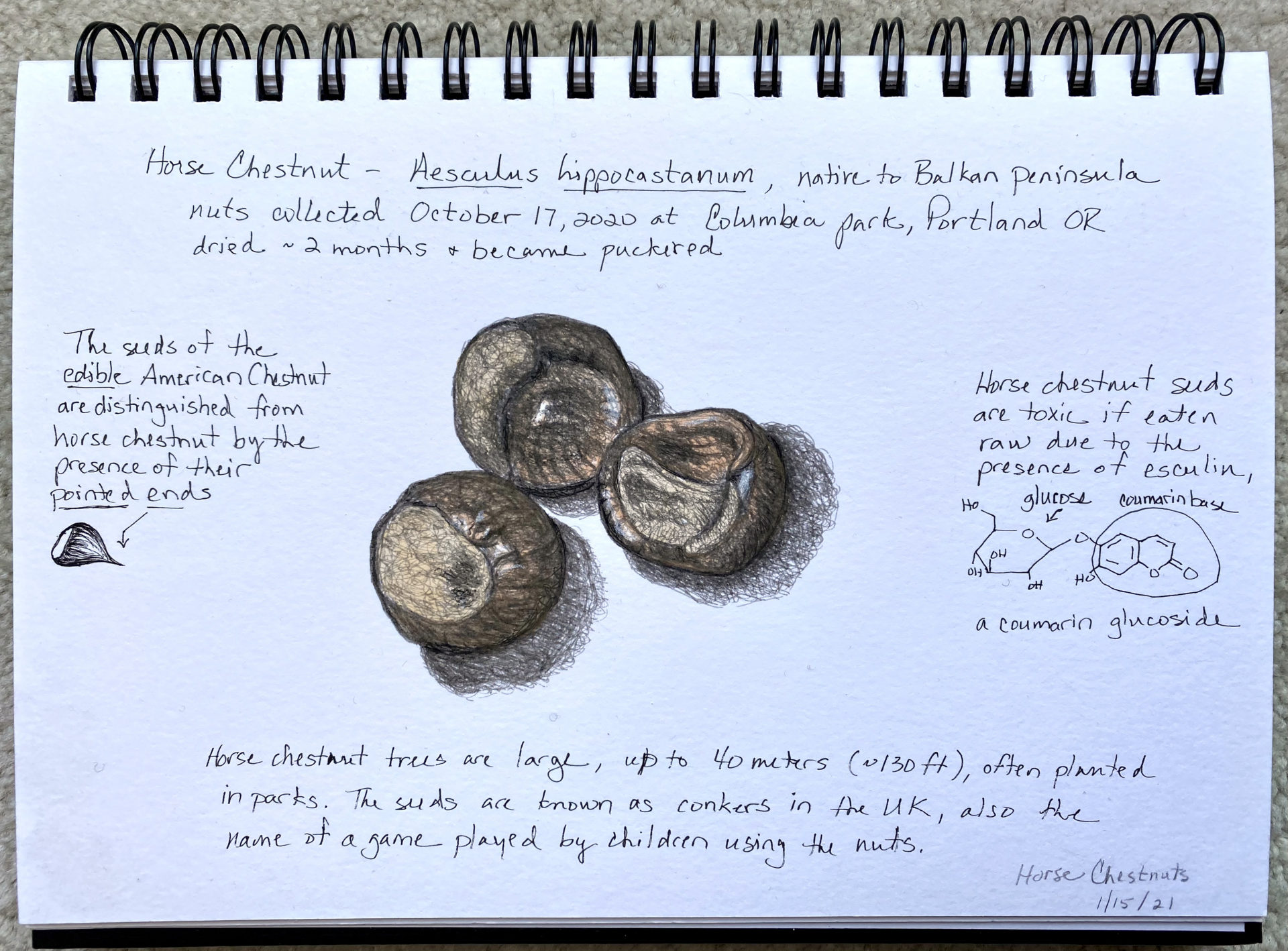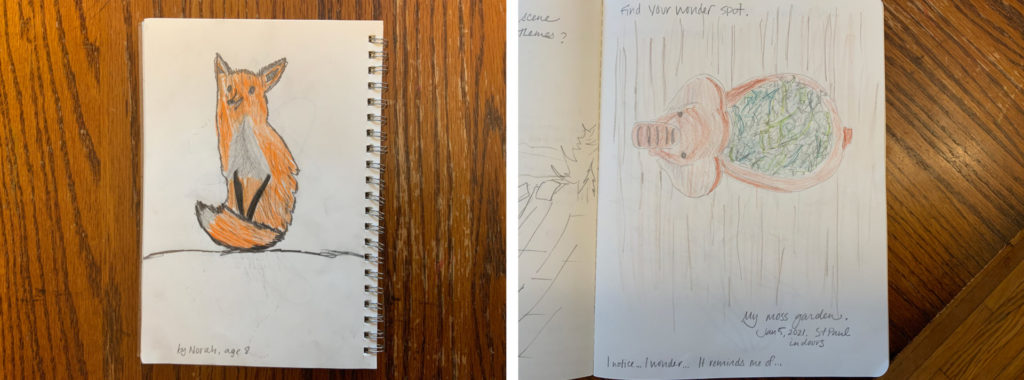
Noticing Nature: Nature Journaling at the Bell
Gallery Programs Coordinator Heather Cummins guides students in the practice of observing and documenting nature
Published04/12/2021 , by Emily Dzieweczynski
As we rush through our lives in a fast-paced world, we don’t always stop to smell the roses, or even to notice the grass growing through the cracks on the sidewalk. Gallery Programs Coordinator Heather Cummins thinks that, maybe if we did, we’d all feel a little better. Cummins has been teaching a class about nature journaling that aims to provide this time and space to slow down and notice nature. Through the practice of nature journaling, students develop deeper connections with nature by observing and documenting the world around them.
In January, Cummins started teaching the nature journaling class virtually. Hoping to maintain an intimate class setting, the registration was capped at about 20 students and the class met every week for three weeks. Over the duration of the class and through the process of nature journaling, the students learned about each other, the environment, and, perhaps, even themselves.

Sketch by nature journaling student Julie K.
The class starts off by discussing what nature journaling is—the regular recording of observations, perceptions, and feelings about the natural world. Nature journaling often starts by sketching things found in nature and pairing the drawing with text. There is no right or wrong way to do it, however, and Cummins encourages students to experiment with different media such as paints, pens, or colored pencils. You can even make nature journal entries with digital media, by creating social media posts or video blogs, for example. The most important thing to practice while nature journaling is taking the time to notice the world around you.
The other class sessions discuss different techniques and practices that might be useful while nature journaling. The class learns about gesture sketching, for example, which is a type of sketching that focuses on quickly getting rough shapes down on paper and then refining them later. This is a valuable technique to use while nature journaling outside, as animals have a tendency to not stay in one place for very long! Cummins emulates what people might experience while sketching quick-moving animals by switching through a deck of images every 30–60 seconds. She hopes this exercise can be a practice in letting go, by encouraging students to welcome the fact that things in nature often move by quickly.

An example of a gesture sketch, by nature journaling student John A.
Thanks to the virtual format, students from all over the country have been able to learn about nature journaling from Cummins. The first session in January was mostly filled with students from the Twin Cities, with one student from Sacramento. By February, students from all over Minnesota, including Duluth, and other parts of California had heard about the class and joined in to learn about nature journaling.
Although we may all be experiencing a bit of Zoom fatigue, Cummins mentioned that the virtual nature journaling class has become a form of therapy for her during the pandemic. Joining up weekly for class presented a special time and place to engage in communal learning. In the midst of the pandemic, it was encouraging to connect with other people and see that we all have things to share, explained Cummins. Even during months of isolation, nature journaling can help you connect with the world around you.

Sketch by nature journaling student Cindy K.
Even if you’re not able to join a class, nature journaling is a valuable practice because it can help deepen our connection with nature. By taking the time to intentionally observe the world around us, we become aware of experiences other than our own. Cummins mentioned that it can be hard to care about something if you don’t know about it. With the help of nature journaling, we can foster care for our environment by simply taking the time to notice it.
Cummins hopes that, through nature journaling, students begin to reimage what nature is and question some standard western ideals. When we view nature as a pristine place that we have to go to—as separate from us—we can forget to look at the nature that is all around us. From native tree species, to house plants, to the grass growing through the cracks in the sidewalk, nature is all around us. Nature journaling can serve as a time to stop and realize this—nature is something we’re already a part of.
There’s value in spending time to appreciate nature for all ages. That’s one reason why she’s offering a nature journaling class for youth grades 6–8 this summer. Students in this middle school class will have the opportunity to learn about observing and documenting the world around them. Although the class will continue to be held virtually for now, Cummins hopes to host the class in person at the Bell in the future.

Sketches by nature journaling students Norah and Sarah C.
By retraining the mind to slow down and notice nature amidst the fast-paced world we’re living in, we can experience the restorative effects that nature has on our health and wellbeing. Nature journaling can offer us a special time and place to appreciate the nature that we’re all a part of. Remember, there’s no right or wrong way to nature journal—so the next time you step outside or take a look out a window, grab a notebook and take a moment to notice your environment.

